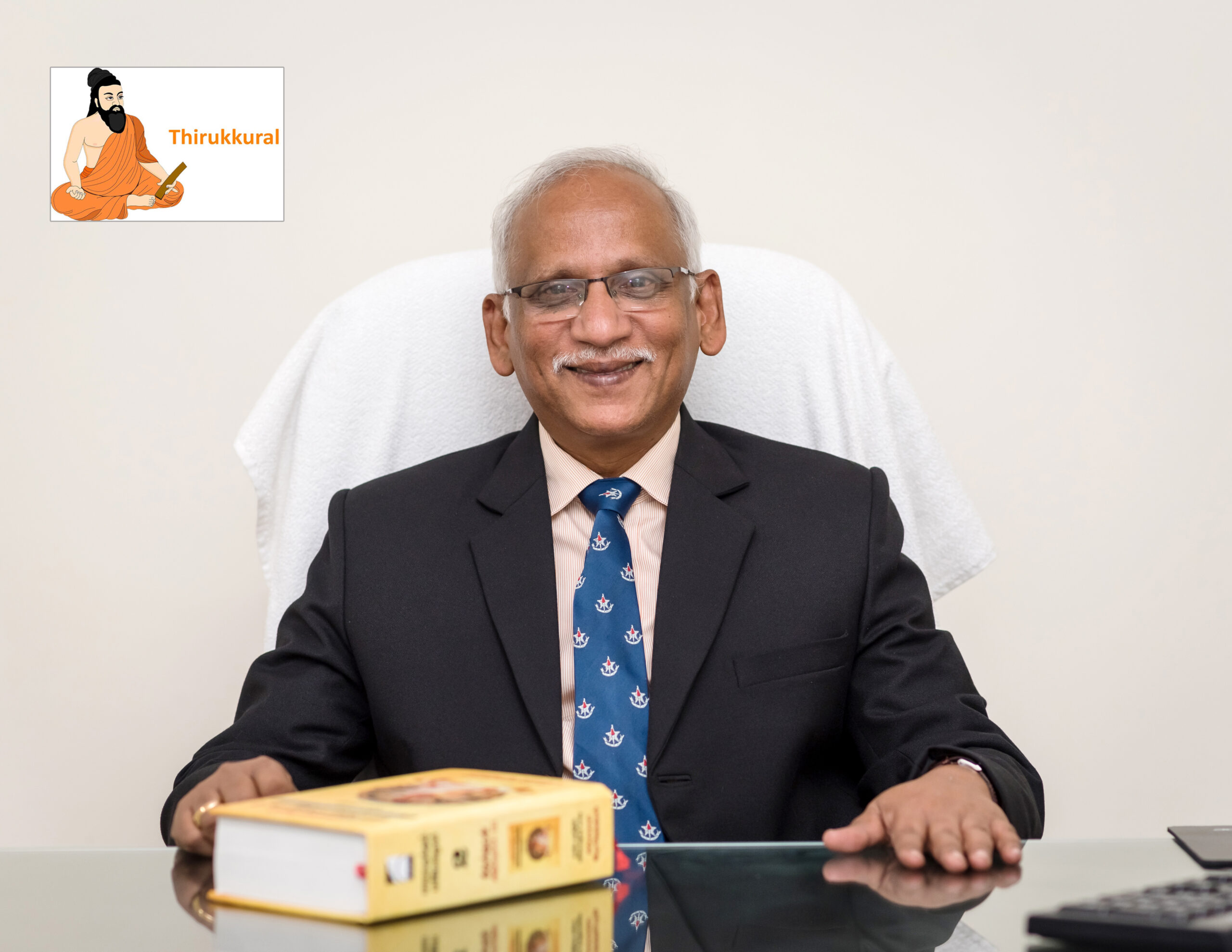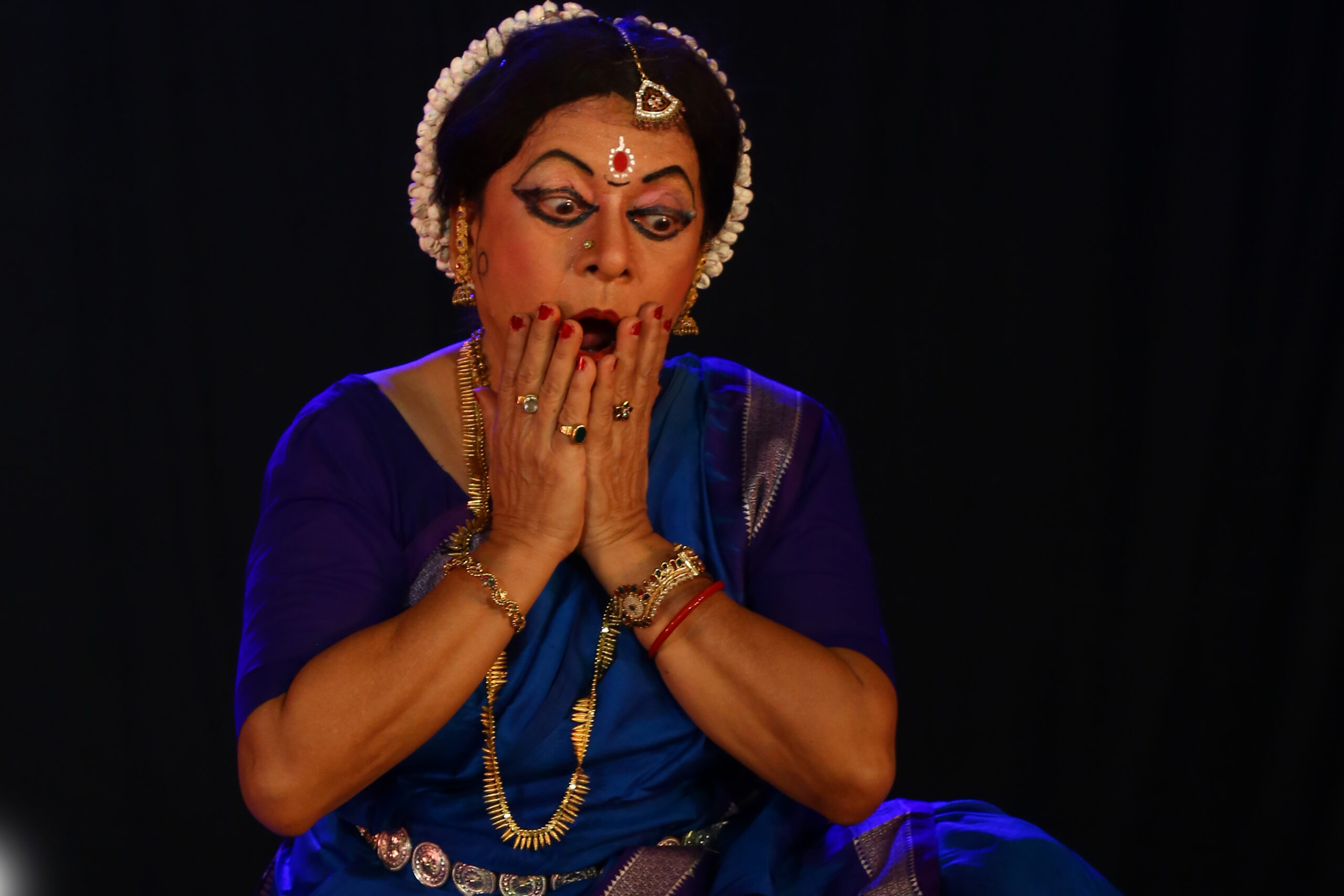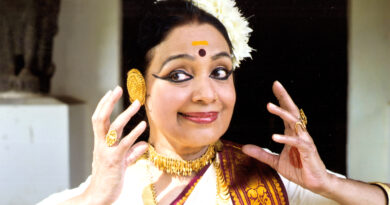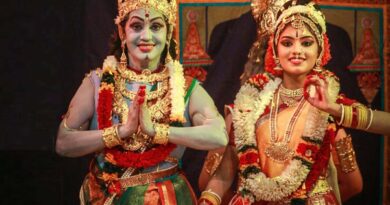C Rajendiran: A Savant of Thirukkural
Text: Paul Nicodemus

He is a simpleton, mostly dressed in formals and highly revered by his colleagues. C Rajendiran, IRS who belongs to the 1985 Batch of Indian Revenue Service (Customs & Central Excise) is a man of principles, values and dedication who believed in the land’s wisdom. If his illustrious career in the Indian Revenue Service is one side of the coin, his contribution to Tamil Literature as an author, especially on Thiruvalluvar’s ‘Thirukkural’ is unparalleled. He dedicated his life to the application of the concepts from ‘Thirukkural, a 2000-year-old text comprising 1330 couplets to modern society.
India lives in villages. The subject of this feature, C Rajendiran was born to Chinnaswamy and Kuppayiamma in a small village named Govindampalayam in Tamil Nadu on December 12, 1957. His grandfather, Vayyapuri was a freedom fighter who took part in Mahatma Gandhi’s movement of picketing liquor shops near Kadalur near Pondicherry in 1931-32. Rajendiran’s father, Chinnaswamy was part of the ‘Sarvodaya Movement’ and ‘Khadi Movement’. His father was a simpleton and a Gandhian not by speech but by action. His mother enjoyed giving to others. The whole village lived as one community with no distinction of caste or creed. It was a typical representation of an Indian village.
He belongs to a weaving family of Tamil Nadu. Weaving is one of the oldest professions in India. Even the legendary poets like Kabir, Thiruvalluvar and Kamban were weavers. Those days agriculture, animal husbandry and weaving were prominent professions. Handloom was a symbol of self-reliance. From his childhood, he believed the land has got its own value and human beings are good by nature.

His father’s profession took Rajendiran to various places in Tamilnadu. So he studied at various places till his 5th standard. The family got back to the native village when he was 8 years old and he continued his education in a one teacher school. He continued studying in the same government school till is 8th standard and pursued his higher education in a nearby town. Those days, there were hardly any private schools, and the government was doing a good job of providing quality and value-based education. Teachers of the time lived selflessly for society. “They may not have taught us advanced physics or science but they taught us values of the system,” he says. Students could see them walk their talk.Rajendiran’s parents taught him to be on the path of dharma and advised him not to deviate from it at any cost. They just did not say it but lived an exemplary life. He imbibed righteousness from his father and fearlessness from his mother. Back in time, even relatives, both near and distant helped each other expecting nothing in return, “Nowadays, pure love has become a rarity in society,” he laments. Rajendiran experienced true community living in his village.
He then moved to Trichy in Kerala to pursue his college education in arts. He lived there for a year and moved to the Government Arts College in Selam. He lived there for five years and experienced people from the cross-section of society while living in the hostel. Those days, there were only five government engineering colleges in Tamilnadu and Rajendiran did not get into them so got into the Government Arts College. He wanted to pursue Chemistry but couldn’t make it and opted for BSc Mathematics.
When Rajendiran was in his 8th standard, there was this teacher in the school, Jagarajan who taught all the subjects. The teacher gave him a taste of Tamil literature by introducing two stanzas of Ramayan. The teacher’s nephew lived in the USA and by showing a postcard from Washington DC, he inspired his pupils and told them they can also travel places if they study well. Though it was a school in a village, the teacher encouraged his students to take part in all the activities. The school even had a shadow parliament with ministers and Rajendiran acted as an education minister for some time. All these little things had a big impact on him. It taught him responsibility and leadership qualities.

In 1975, while pursuing his bachelor’s degree, there was a recitation competition on Thirukkural. He took part, memorised, recited and stood second in the competition. Thirukkural was considered an important part of life and he had a taste.
Situations of the time demanded him to stand on his feet and he got into a job in Tele Communications while still pursuing MSc Mathematics. They trained him for a year in Trivandrum. He got selected as a technician at the junior level cadre and joined the Telecom in February 1979. “I was the leader of the 30 member group because I was a highly educated person and all the others were diploma holders,” he says.
In the training period, Chandra Shekhar Warrier, an assistant engineer told Rajendiran, “You are over-qualified for this post. Improve your English, read the Hindu newspaper, equip yourself with better knowledge and move out of the department.” He took the advice like a disciple takes the words of his guru. Over the course of the next 3 years, he improved his English communication skills and moved out of the department. “I equipped myself with a BEd degree hoping that I would become a teacher because most of my friends from MSc Mathematics joined as teachers. In addition, many members of the family were also teachers,” he reveals.
Meanwhile, he wrote bank exams and did not qualify for some but he qualified in a Reserve Bank of India (RBI) exam for a clerical post. His salary in Telecom was Rs 800, and they offered him Rs 1800 at the RBI. Around the same time, he also cleared a special recruitment exam for Andhra Pradesh, Tamil Nadu, Karnataka and others to be an inspector in the excise department. He had two jobs in his hand and needed to decide. “I joined Reserve Bank in December 1981. It was a big jump,” he says.After joining the Reserve Bank of India, he had another turning point in life. He observed employees ranked below him appeared for civil service examinations. “I felt if these guys can appear for civil service interviews and clear them why shouldn’t I try it?” he explains. Rajendiran tried it and reached the interview stage in the first attempt with mathematics and political science as his subjects. But he did not clear the mains.Meanwhile, he appeared for a State Bank of India exam and cleared it. “Earlier I couldn’t clear an exam for the post of a clerk and now I cleared an exam for the post of an officer. All the preparation for the other exams helped me to get through the exam with no preparation,” he smiles. In December 1983, he joined as an officer at State Bank of India in Ahmedabad with a salary of Rs 3500. After working for a year, he realised that the job was not meant for him. He again prepared for the civil services but by then he lost his touch with mathematics. One colleague from RBI suggested him to take Tamil as his second option and Political Science as his first. He prepared for the exam on his own with no coaching and cleared it with a rank of 323. He joined Indian Revenue Service in Customs and Central Excise in December 1985.

In the process, Tamil literature resurfaced in his life. The link from his school days made its way back and preparation for services helped it. After the training, they posted him in the customs department in Calcutta. After a two-year stint, they posted him to Madras in the Revenue Intelligence. As a young and dynamic officer, he worked in the department for 6 years and arrested 200 people. Then he moved to Delhi on promotion in Inspection Directorate. Later, he got back to the headquarters as a joint director in the Revenue Intelligence. Here, he had a satisfying stint for 3 years. He then spent some time with Delhi Customs Department. He was then picked up for a position in Singapore in the Customs for Overseas Intelligence Network. He worked in Singapore for four years on deputation to the foreign ministry. He oversaw proceeding in the South Asian region which included Australia and New Zealand apart from Asian countries, for customs cooperation.
While working as the head of the commercial side of the mission, his interest in Tamil got revived. Tamil was one of the official languages of Singapore apart from English and Mandarin. The country’s population comprised 8 percent Indians and out of which 90 percent were Tamils. His frequent interactions with people made him have a re-look into Tamil literature. Confucius, who was considered the architect of modern civil services in China was widely quoted. Confucius took the ancient knowledge of China from the Golden period – the three emperors period and reinterpreted it for modern society. “Majority of the Chinese in Singapore drew inspiration from Confucius and then I thought why not Thiruvalluvar?” he says. Rajendiran looked into Thiruvalluvar teachings and his ancient wisdom of life. His time in Singapore gave him an opportunity to delve into the teachings of Thiruvalluvar and he developed a holistic view and a whole new dimension.

He found couplets written by Thiruvalluvar in Thirukkural to be pregnant with meaning. “Each couplet was like an atom with seven seas hidden inside it. A normal approach may not reveal its inner meaning,” he says. These couplets survived for over two millennia. When something survives 2000 years there ought to be truth in it. “I wanted to know the real meaning of these couplets. Truth alone triumphs,” he adds.He took one of the best commentaries on Thiruvalluvar, written by Parimelazhagar, a poet from Kanchipuram around 1250 AD. In the 13th Century, there were three universities in the region – Takshila, Kanchipuram and Nalanda. Out of the three Kanchipuram was believed to be the oldest and a seat of learning for all languages. Rajendiran wanted to look into the teaching of Thirukkural with the help of Parimelazhagar commentaries. “Confucius on one side and our ancient Indian wisdom on the other side. I wanted to do a comparative study. But before that, I first wanted to understand Thirukkural and delved deep into it,” he says.In 2005, he went to Chennai on leave. He straight away visited Pondy Bazaar and picked up the old commentary and few other books to understand the commentary. He then did a comparative study. His innate passion to study and understand Tirukkural resulted in writing his first book titled திருக்குறள் உவமை நயம் (Thirukkural – Uvamai Nayam). In this book, he attempted to share his thoughts and reflections on the metaphors and similes used in Thirukkural in today’s context. He released the book written in Tamil in September 2007. “Thiruvalluvar used several techniques to convey the message. Within two lines and a few words, he had to convey real meaning,” he says.
In 2009, something more profound came into his mind. He felt whatever he did so far was the tip of an iceberg – 238 couplets out of 1330. He thought only Metaphors and Similes would not help in understanding the complete meaning of Tirukkural. He had decided to study the entire work from the 700-year-old commentary. He segmented and wanted to come up with 10 different books on 10 aspects of Thirukkural.
After joining civil services, Rajendiran got married to Malarkodi in 1986. She is from his mother’s hometown. She was a student of Sarada College in Selam, a college which taught great values besides academics. After marriage, in the case of a coincidence, she came home with a book on Thirukkural.

Thirukkural contains 133 chapters – 38 chapters on Righteousness, 70 chapters on how to deal with society and last 25 chapters are about love. In 2009, he told his wife they would leave the last set of chapters and write short stories of this land, short stories of today and short stories from real life based on the first 108 chapters. “The idea was to weave stories based on couplets from each chapter. When the reader reads the story, it should convey the message of the chapter. The story itself could be enacted or told to children. The tradition would go from one generation to the other,” he explains. His wife Malarkodi Rajendiran has written the book titled நிழல்காட்டும்நிஜங்கள் (Nizhal Kaattum Nijangal) containing 124 stories conveying the essence of first 108 chapters of Thirukkural. The title translated to ‘Truth Through the Shadows’. She wrote it in 9 months. Their children then came up with an idea to add illustrations to these stories. They found an artist in Coimbatore and he read the stories and drew illustrations for all the 108 chapters. On the whole, the book had 124 stories. The publisher was happy to publish a 500-page book.
Around the same time, a friend of Rajendiran had come from Chennai to Coimbatore and advised him to write a book on the entire Thirukkural instead of several small books. “He told me, it was ageless wisdom and asked me to write a book on the entire thing. At that point of time, APJ Abdul Kalam’s classmate from St. Joseph’s College, Sampath Kumar suggested me to begin with friendship,” he says. He worked on the project and he took 7 years to complete it. He read books, got in touch with few scholars and worked on it whenever he found the time.
Simultaneously, he excelled in his profession as a servant of the Indian Revenue Service. “The government had a lot of confidence in me and my work. I was always designated as an executive commissioner. Had it been any other job, I would have had more time to work on the book. I worked on the book on Saturdays and Sundays,” he says. He completed writing the book in November 2016.

He believes in destiny but he is not a prisoner of destiny. “I can craft my destiny,” he says. Destiny has taken him to Chennai where he finally had a work-life balance. It allowed him to continue his work on the book. Though, he finished writing the book, post processing work like proofreading and checking for cohesion and coherence needed his attention.Parallelly, he had an encounter with a guru named Bala Subramanya Swamy and it had a positive effect on him. He received good guidance from the guru. Guru Balu initially worked as a driver for a company for 35 years and remained a bachelor. Even the next-door neighbour would not know about the greatness of this man as he never had a huge following. “As a divine intervention, the right people were brought into my life at the right time. I was apprehensive of reading the first chapter as it was the most important part and I was looking for a scholar. At that point of time, Srinivasamurthy, who retired from our department as an assistant commissioner came to me looking for an opportunity to work on the project and voluntarily offered to help – like a squirrel to Rama. But instead of being a squirrel, he became a pivotal member in my yangna,” he says.
He took one more year to fine tune the book. In the period, new ideas emerged, and he also incorporated them. After he considered the book to be ready, he gave it to Balasubramanian, Sahitya Akademi Award Coordinating Committee Member for Tamilnadu and he wrote a 10-page Foreword within two months. When everybody involved thought the book was ready, it took another two years to refine and add the third volume. Finally, the book, “Pamararukum Parimelazhagar” was launched in December 2018. Three volumes of the book put together comprised 1088 pages. The book brought Parimelazhagar’s work close to 21st Century society. Earlier, his work was exclusive for the scholars and this book opened a door for the common man to understand the wisdom of Thirukkural. “All the authors whoever worked on Thirukkural so far did it not to be at the forefront but to pass on the wisdom of the past to the next generation,” he says.
Rajendiran has a Master’s degree in Mathematics (1979) from Government Arts College, Salem, The University of Madras and gained two Bachelor Degrees one in Law (1993) with specialisation in Criminology and the other in Education (1981). Later he has also done PG Diploma Programme in International Business Operation (2002) from IGNOU, New Delhi and Patent Laws (2003) from NALSAR, Hyderabad. Immediately before assuming charge as Vice Chairman, he joined the Commission as

Member, Settlement Commission, Chennai in November 2016. Immediately before that, he held the charge of Chief Commissioner of Customs, Central Excise and Service Tax, Visakhapatnam, Andhra Pradesh. He worked in various capacities in major Custom Houses such as Kolkata, Chennai, New Delhi, Tuticorin and Visakhapatnam. As Commissioner Central Excise & Service Tax, Coimbatore, he successfully implemented Pilot Project on ACES (Automation of Central Excise and Service Tax). He worked for about 9 years in the Directorate of Revenue Intelligence at various levels both in the Zonal unit (Chennai) and in the Headquarters (New Delhi) and handled several cases relating to Cross Border Smuggling, Drug Trafficking, Commercial frauds relating to imports and exports. He was honoured with the Presidential Award of Appreciation Certificate for rendering ‘Specially Distinguished Record of Service’ on the occasion of Indian Republic Day 2003. From July 2003 he worked for four years as First Secretary (Commerce) in the High Commission of India, Singapore. During his tenure in Singapore, as Head of the Commercial Wing, he handled many Government, Business and Student delegations from India visiting Singapore and vice versa. He played a very important role as a Coordinator and a member of the negotiating team in the negotiation and conclusion of the Comprehensive Economic Cooperation Agreement (CECA) between India and Singapore, which was signed on 29th June 2005. He is working as the Vice Chairman, Settlement Commission, Customs, Central Excise and Service Additional Bench, Chennai, since June 2017. He is a Savant.
Rajendiran has been keen on sharing his experience with the young generation and has addressed over 2 Lakh School/College Students, Academicians and Representatives of Trade and Industry since 2007. He considers Thirukkural as an operating manual for meaningful, effective and joyful living. He firmly believes that the principles in Thirukkural lay a strong foundation to our life if only we understand the true meaning and practised it in our day-to-day life.




